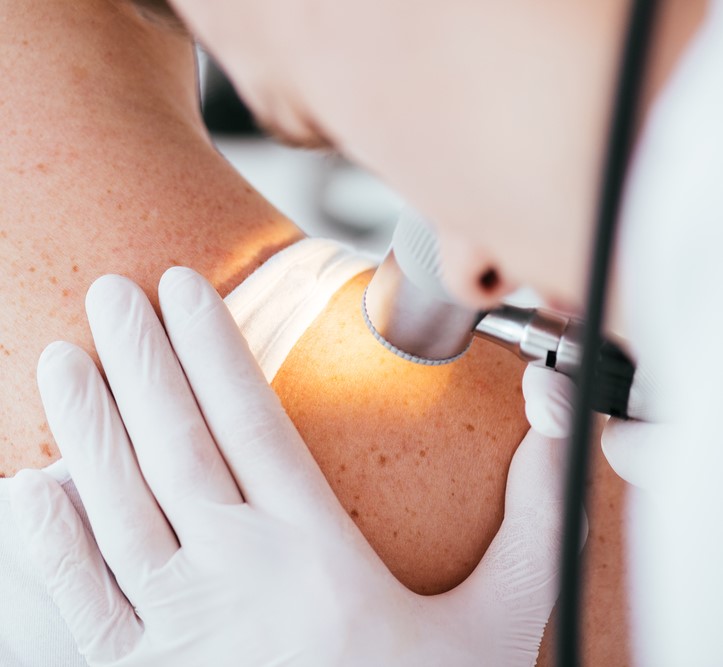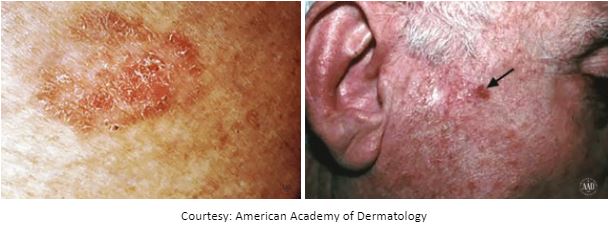May 8, 2023, 15:07
by
Dr. Tamara Berry

How common is skin cancer?
Skin cancer is the most common cancer in the U.S., but it’s also one of the most preventable. One in five Americans will develop skin cancer, according to the American Academy of Dermatology. Skin cancer rates are higher in women than in men before age 50. Although skin cancer develops more frequently in people with fair or light skin tone, anyone can get it.
What causes skin cancer?
More than 90% of skin cancer is caused by excessive exposure to the sun. There is no such thing as a safe tan. Any tanning can cause injury to the skin. Having had more than five sunburns doubles your risk of skin cancer. Some skin conditions, scars and certain medicines can make your skin more vulnerable to sun damage. People with melanoma or a family history of melanoma are at a higher risk of skin cancer. Ask your doctor if you think you could be at a higher risk.

What is the best way to prevent skin cancer?
- AVOID THE SUN. Stay in the shade, especially when the sun is strongest between 10:00 am and 4:00 pm.
- PUT ON SUN-PROTECTIVE GEAR. Wear sun-protective clothing, like lightweight long-sleeved shirts and pants, wide-brimmed hats, and sunglasses with UV protection. Some clothing brands even list the ultraviolet protection factor (UPF) on the label.
- USE SUNSCREEN. Broad spectrum sunscreen with SPF of 30 or higher protects against harmful rays. While sunscreen labels may promote water-resistant or very water-resistant properties, none are waterproof or sweatproof, and they need to be frequently reapplied.
- AVOID TANNING BEDS. They cause long-term skin damage and can contribute to skin cancer.

What is the best way to detect skin cancer?
Regular self-exams can be done in front of a full-length mirror, going from head to toe. Make sure to check the backs of your legs and feet, the spaces between your toes and the soles of your feet. Use a hand mirror to examine your neck, scalp, back and bottom.
Get to know your moles, birthmarks and keep track of any changes. If you notice an area of concern, talk to your primary care provider.
While the expertise of highly-trained dermatologists can help you find and prevent skin cancer, the U.S. Preventive Services Task Force (USPSTF) has not found sufficient evidence to recommend for or against annual skin cancer screening for adults of average risk. Your healthcare provider may recommend a regular dermatological exam if you have atypical moles, increased exposure to ultraviolet (UV) radiation or if you have familial atypical multiple mole and melanoma (FAMMM) syndrome, an inherited tendency to develop melanoma.
What are the different types of skin cancer?
Basal cell carcinoma (BCC) is the most common form of skin cancer. It shows up most often on parts of your body which are more likely to be sun-exposed, such as your scalp, face, ears, chest, back and legs. It can appear like a flesh-colored bump or a pink patch of skin. You have a greater risk of developing this BCC if you have a lighter skin tone, do not practice sun protection or have used tanning beds.

Squamous cell carcinoma (SCC) is the second most common form of skin cancer. It usually appears on the edges of the ear, the face, neck, arms and back. It looks like a firm red bump, a scaly patch of skin or a sore that heals and then reopens. Squamous cells exist all around the body. They line the lungs, throat and thyroid. Sometimes SCC develops in areas with little or no sun exposure, like the mouth, genitals or anus. In those cases, some research shows the SCC could be due to an injury or a human papillomavirus (HPV) infection.

Melanoma is the most serious form of skin cancer. It can look like a pimple, sore or a bruise. It can appear on an existing mole, or as a new spot on the skin. Melanoma is usually found on the upper back, torso, lower legs, head and neck. It is easier to treat if it’s found before it moves to the inner layer of the skin. If melanoma is advanced or metastatic, meaning it has spread to other parts of the body, immediate attention is needed. The risk of melanoma is increasing in people under 40 and especially in women. Factors that increase your risk of melanoma include excessive UV radiation from sunlight or a tanning bed, a history of melanoma (personal or family), many moles, fair skin, light eyes, and light or red hair.

Can a dermatologist identify skin cancer just by looking at it?
A highly-trained dermatologist can often determine if an abnormal area of the skin is cancerous, however the only way to know with certainty is through a biopsy. Your dermatologist will remove a small sample of the abnormal area and a pathologist then will examine the tissue to see if the skin growth is benign (not cancer) or malignant (cancerous.)
What is the skin cancer survival rate?
Most forms of early stage basal cell carcinoma and squamous cell carcinoma have very high survival rates, because the cancer can be completely removed during a biopsy. Survival rates are lower for later-stage skin cancer because often the cancer has spread to other parts of the body. The survival rates for melanoma vary based on several factors, like age, overall health, and how well the cancer responds to treatment. Among all people with melanoma of the skin in the U.S., from the time of initial diagnosis, the 5-year relative survival rate is 94%.
Dermatology at Sansum Clinic >
Dr. Tamara Berry >